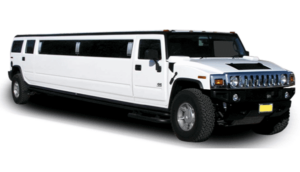How to Choose the Best Bus Rental Type for your Group
What is a charter bus?
A charter bus is a vehicle that can be rented out to individuals or organizations for group travel. A commercial driver licensed to drive passengers picks them up from their starting point and takes them to each stop. Seating: Motorcoaches can seat anywhere from 36-60 people, and they are great for family reunions, guided tours, field trips, church retreats, and other events. The most common seating options are 47, 55, and 56.
Amenities: Passengers will enjoy comfort and luxury by riding in comfortable seats with air conditioning, TV monitors, and DVD players. For groups that need to be connected, rental buses may include Wi-Fi or power outlets.
Storage: Store your luggage and other equipment in the space below the bus. These storage areas usually allow each passenger to bring their suitcase. To keep the aisle clear, overhead bins store personal belongings inside the motorcoach.
Distance: Most buses can travel both locally (often under 200 miles) or across state lines. Coaches are great for long-distance trips because they have reclining seats or restrooms.
Terms of Rental: Depending on your trip itinerary, motorcoaches can be rented by the hour, day, or mile. Our pricing guide provides more details about rates.
What is a minibus?
A minibus is a motorcoach with fewer than 35 seats. They are used as shuttles to airports, hotels and festivals, concerts, conferences, and weddings.
Seating: Minibuses can hold between 10 and 35 passengers. The most popular sizes are 18 to 20 seats, 20 to 25 seats, and 25 to 25 seats.
Amenities: These coaches are equipped with air conditioning, reclining chairs, TV monitors, and DVD players. Newer models include Wi-Fi and power outlets.
Storage: Minibusses are great for short trips, and many have overhead bins to store small bags and personal items. A few buses have a trunk at the back for items storage. Make sure you tell your reservation agent how much storage space is required at the time you book.
Distance: Most people rent minibuses to use locally, but some bus companies allow them to be used interstate.
Terms of Rental: Minibuses can be rented hourly, daily, or per mile, depending on the itinerary. Minibuses’ typically cost $100-200 more than standard buses.
What is a party bus?
Party buses offer a fun alternative for limos or standard charter buses. They have minibars, special lighting and space for dancing inside. These buses are great for birthdays, bachelorette, bachelor and bachelorette parties, weddings, proms, and other events. Bus companies refer to them as “limo buses” because of their similarity to limos.
Seating: Although many party buses can hold between 10 and 50 people, the most popular seating options are 14 to 20 passengers, 20 to 40 passengers, and 28 to 38 passengers. Its seats are placed along the edges of buses to allow for dancing and games.
Amenities: Party buses come with lounge-style seating and fiber optic lighting.
Storage: Some buses have overhead bins or storage spaces under the seats to store personal belongings. When you book your rental, let your bus agent know how much storage space is required.
Distance: Although some bus companies permit party buses to travel across states, others are limited to local use.
Terms for Rental: These buses have the most popular pricing options: hourly or daily, and their rates are comparable to charter buses.
What is an entertainer bus?
There are significant differences between charter buses and entertainer buses, making them different travel experiences. Mainly, entertainer buses are used by celebrities and touring artists as luxury motorhomes. These coaches can be used to provide a comfortable place for your group to sleep, work, and play while you are on the road.
Seating: Entertainer buses offer lounge-style seating for 8-12 people.
Amenities: Tour buses can be used as temporary homes on wheels, and they have a kitchen, lounge area, and bunk beds. There is also a restroom, WI-Fi, satellite TVs, and power outlets. Artists can request custom modifications from select bus providers.
Storage: Bus passengers store their belongings in the luggage bays or storage compartments underneath the bus. Artists needing extra storage space to keep their equipment can rent trailers that attach to the back of a bus.
Long-distance travel: Most professionals use tour buses. They are sometimes rented locally to be used as high-end shuttles or temporary recording studios.
Terms of Rental: Although most buses are chartered per day or mile, some companies offer monthly or yearly rentals for artists on tour.


